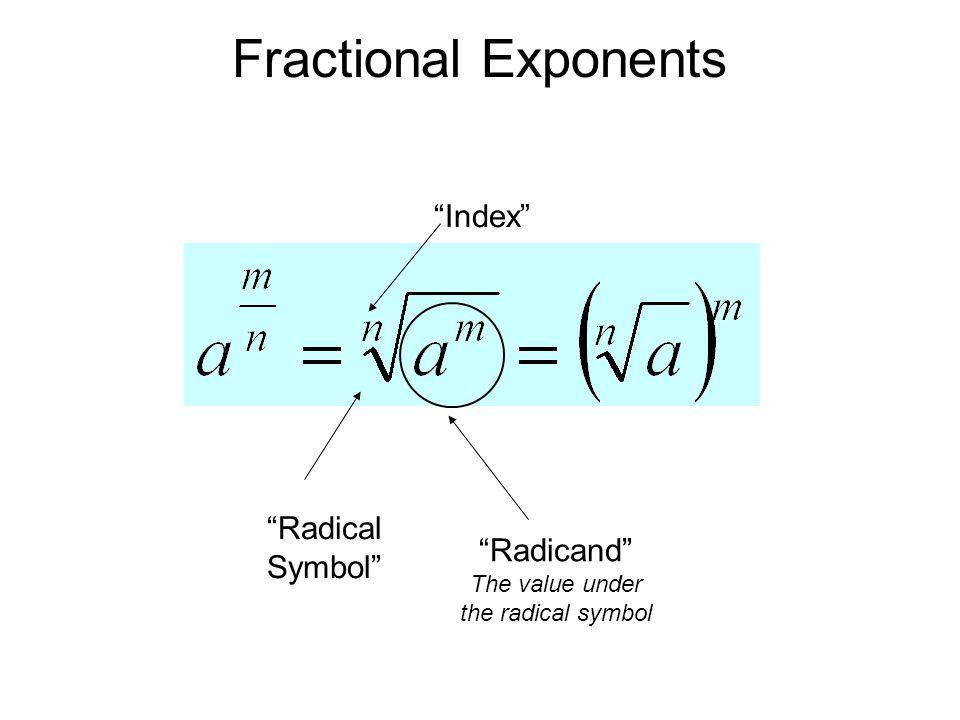pre-calc/algebra formulas and cocnepts
1/9
Earn XP
Description and Tags
Name | Mastery | Learn | Test | Matching | Spaced |
|---|
No study sessions yet.
10 Terms
when graphing an inequality phrased as “less than” or “greater than”, it uses ________
an open dot; that point is NOT included so it goes THROUGH the open dot; it does not “stop” at the point
when graphing an inequality phrased as “less than or equal to” or “greater than or equal to”, it uses _______
a closed dot; that point IS included so it STOPS at the closed dot; as if it is blocked at the point and has to stop before it can continue
when multiplying two values with the same base but different exponents, you ______ the exponents
add (product rule of exponents)
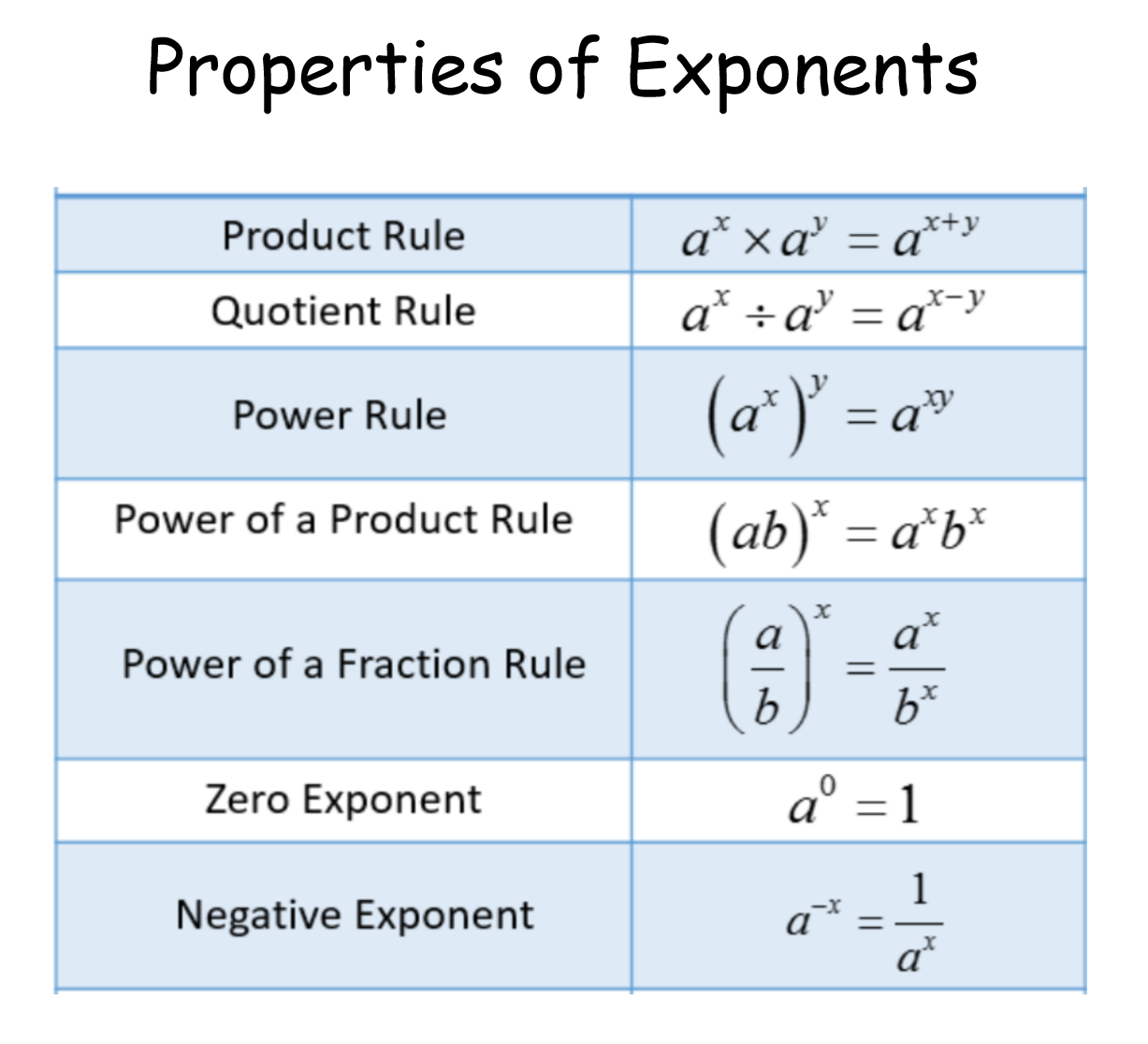
when dividing two values with the same base but different exponents, you ________ the exponents
subtract (quotient rule of exponents)
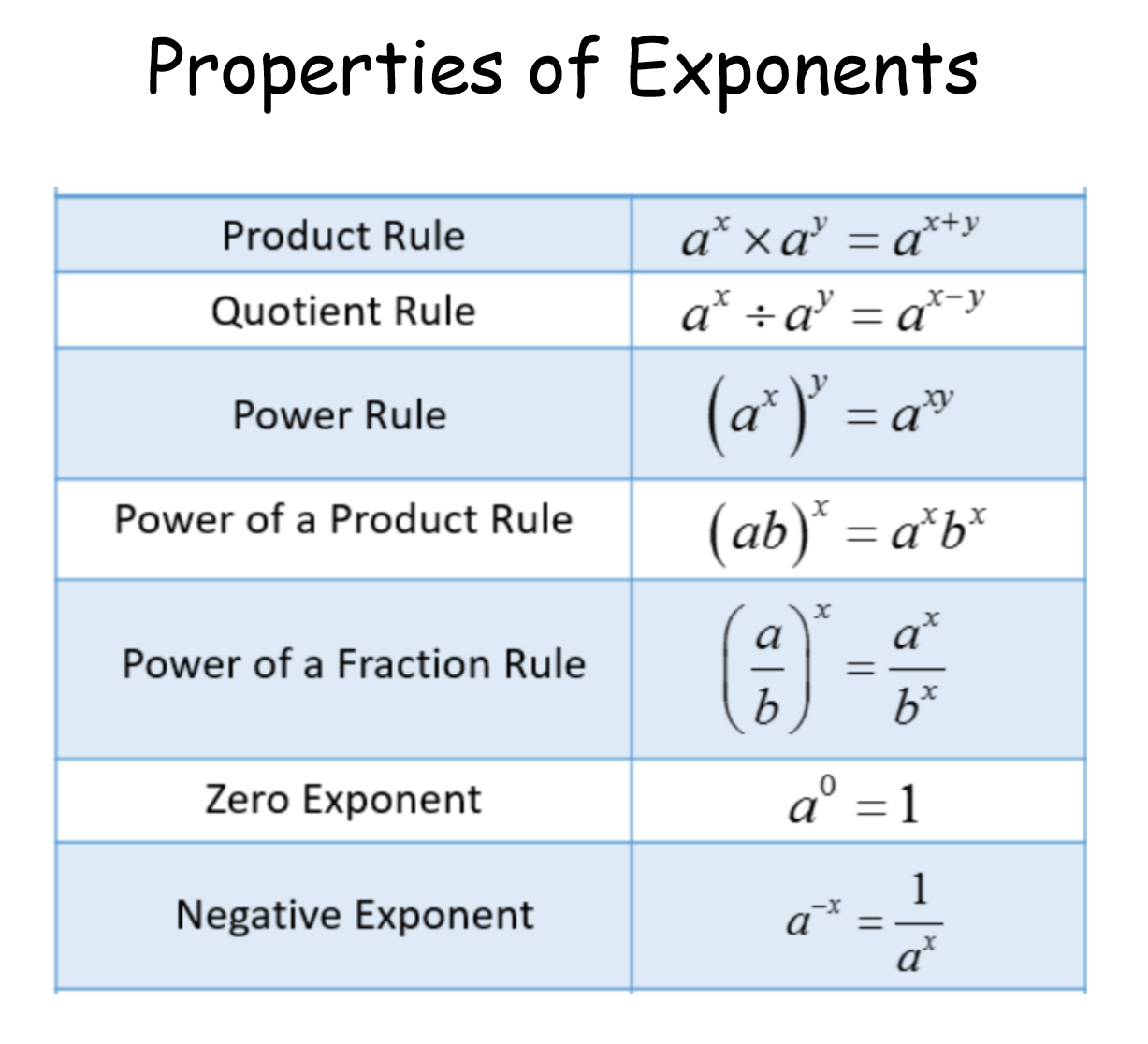
when a value with an exponent is being raised to another power, you ______ the exponents
multiply (power rule of exponents);
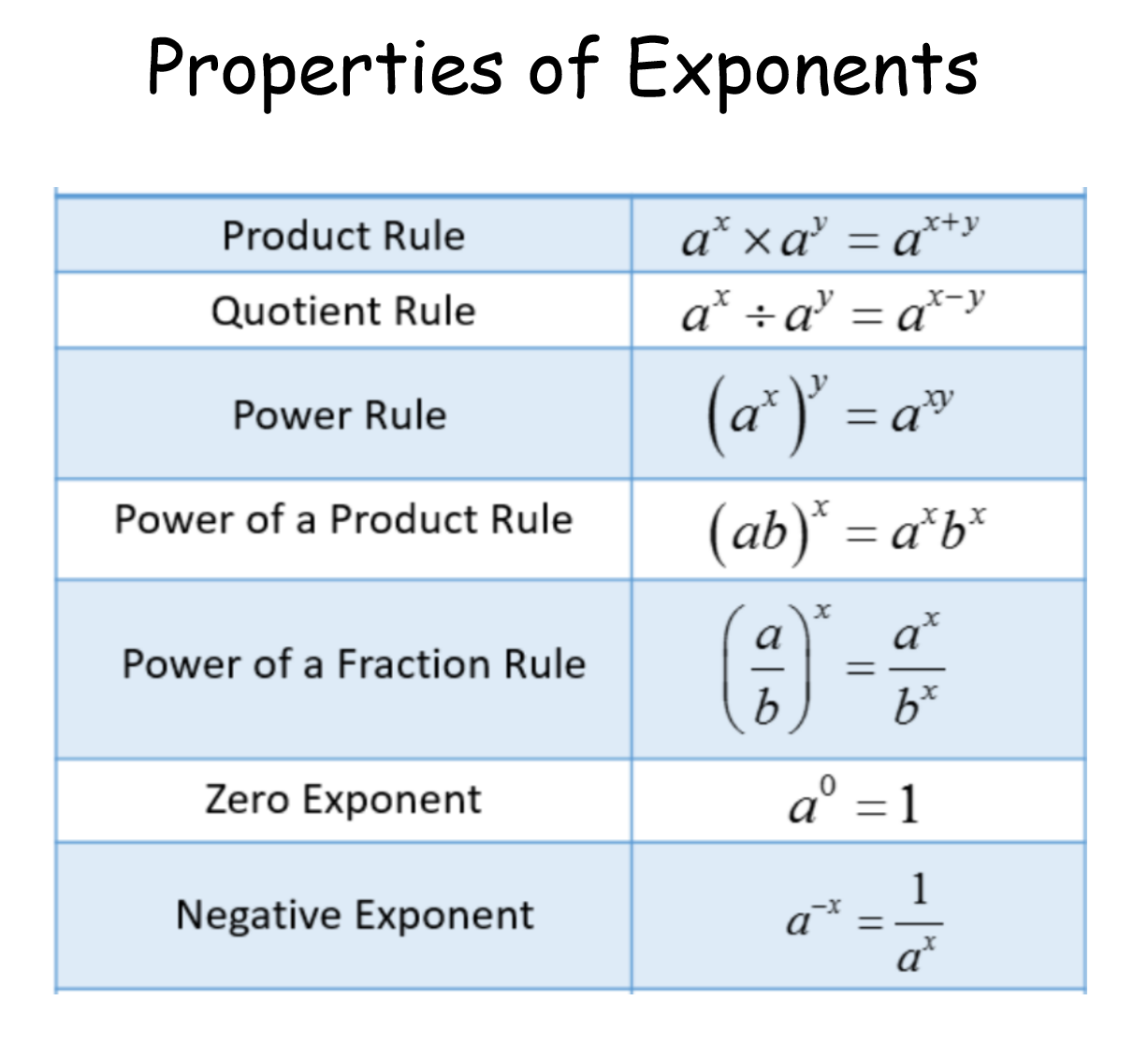
when two or more values are being multiplied and raised to a power, what happens to the values?
each value is raised to that power (power of a product rule)
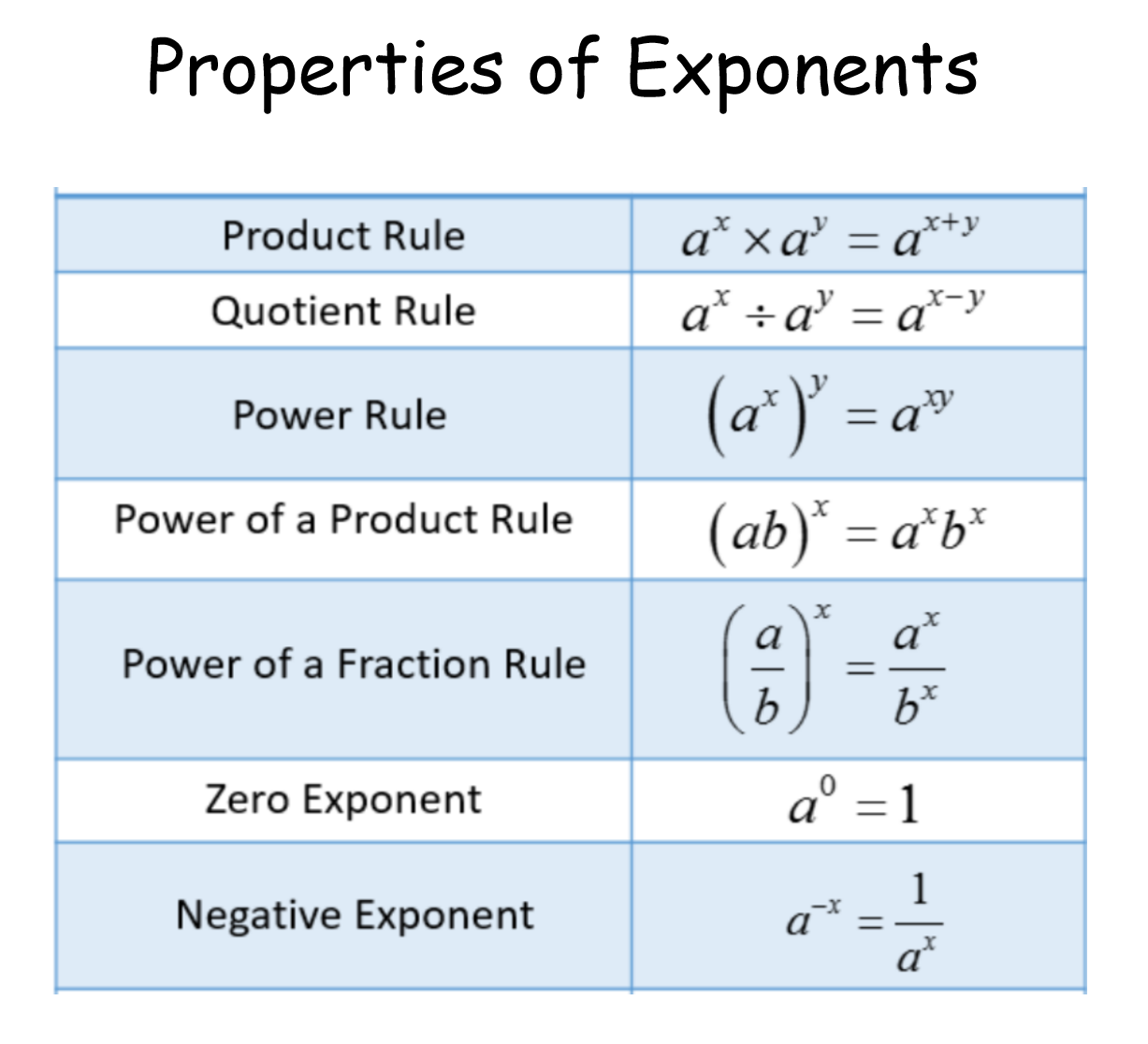
when a fraction is raised to a power, what happens?
both the numerator and denominator is raised to the power (power of a fraction rule)
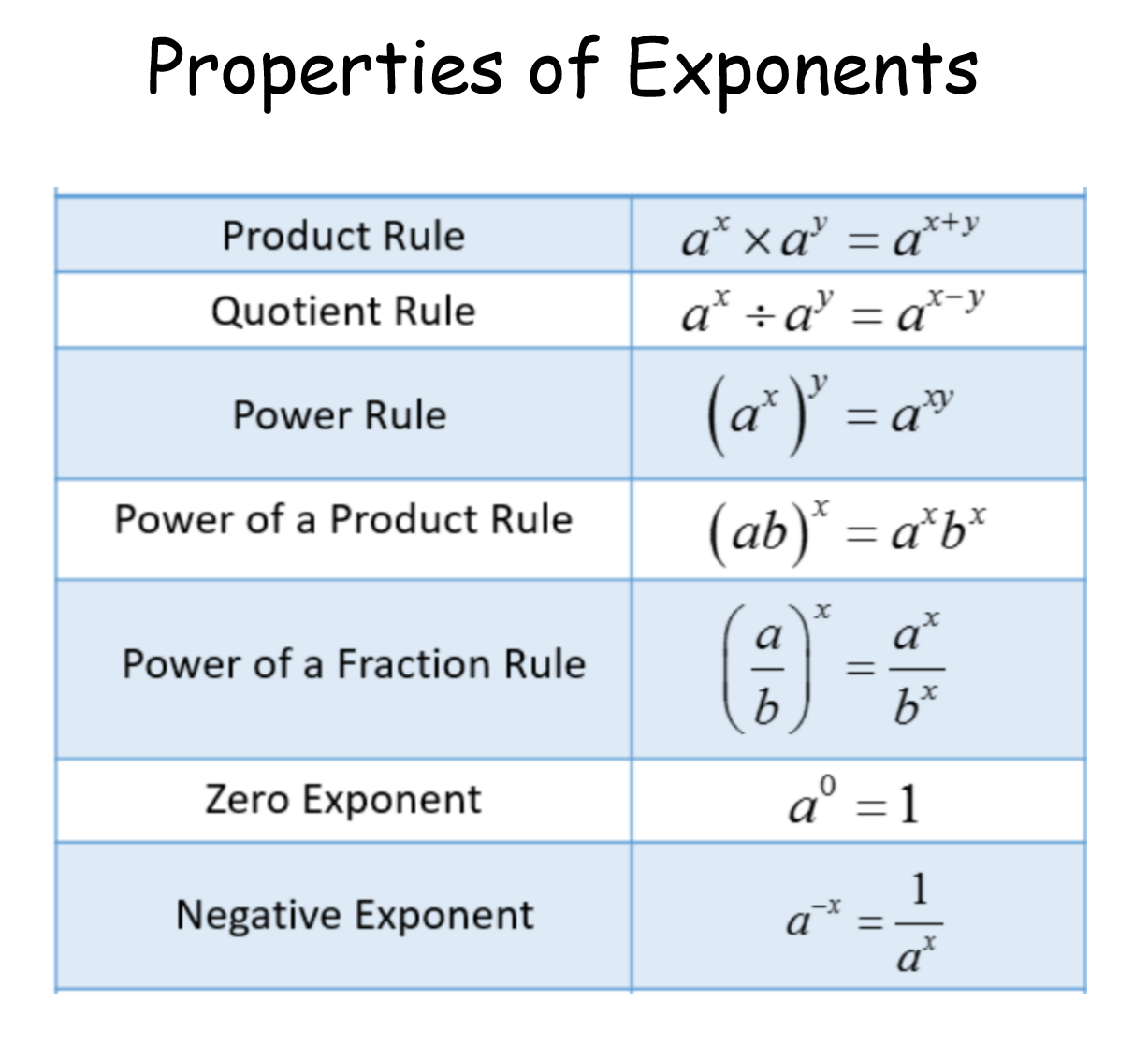
when a value has a negative exponent, what must you do?
convert the value into a fraction; value goes into denominator and the exponent is then made positive (negative exponent)

how can you rewrite a value’s fractional exponent into a radical expression?
value and the numerator go underneath the radical (aka it becomes the radicand) while the denominator becomes the index
